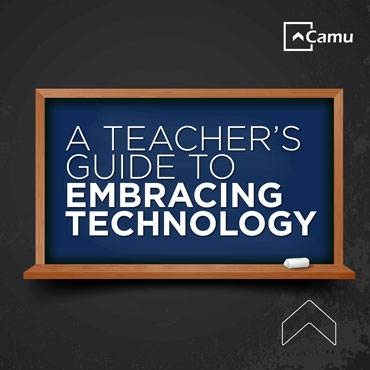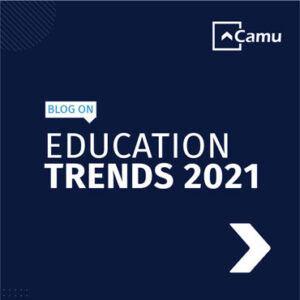
A Teacher’s Guide to Embracing Technology
Whether it’s interpreting new features on the go, navigating between online and on-campus instruction, customizing curriculums, and/or grading assignments, teachers have faced a variety of obstacles in the perennial struggle to keep students educated and engaged.
Digital competency is the new mandate. And with so many budding opportunities in the ever-growing technology field, it is essential for teachers to be able to grasp this knowledge and use it to help students achieve their goals.
If you’re an institution looking for some insight into the relationship between teachers and technology, here are 6 factors to consider!
1. Motivation: Becoming digitally literate goes beyond mere training programs and learning modules, it requires a certain level of commitment and passion. Ensuring faculty members understand the reasons for which they need to embrace technology before they deep dive into it, is the first step towards achieving human-tech synergy. It’s advisable for institutes to adopt a holistic and proactive approach to introducing new tools, one that focuses on the benefits and value to students and other primary stakeholders. By inspiring an attitude and desire to participate in the change through open communication, you’re more likely to reap the advantages of having an EdTech platform.
2. Training: It is important to acknowledge that most educators may not have been exposed to learning technology as part of their professional development. Making this transition in such a short period of time and acquiring the right combination of skills thereafter, requires a smart and hands-on training program. Depending upon the campus management solution in question, institutes will have to take steps to successfully and seamlessly onboard faculty members onto the new platform. Product demonstrations are a great way for instructors to gauge, first-hand, how the software can be used. Remember, training is an ongoing journey and not a one-time fix.
3. Support: When integrating pedagogy with technology and reimagining curriculums for online delivery, it’s imperative to have a reliable EdTech partner. One that is available to you for the purpose of technical aftercare. This is simply because of the myriad of unexpected challenges that may arise. From connectivity issues to bandwidth troubles, data loss to privacy concerns, the virtual world is vulnerable. Hence, it is recommended to have a contingency plan for teachers to tap into. When you give instructors adequate support, along with a community to fall back on, they are empowered to use the tools in an intended manner.
4. Feedback: Continuing with the previous school of thought, we’re here to remind you of the merits of establishing a feedback model. Let’s think about it logically, shall we? When you allow teachers the freedom to air their grievances, share their points of view, and make suggestions for improvements, what you’re really doing is giving them a voice. And without their unique voice, technology integration becomes directionless. After all, it is the teachers who are going to be facilitating the knowledge exchange, implementing useful digital tools to expand learning opportunities for students, mentoring, and guiding them to achieve their goals. Hence, their perspective matters.
5. Collaboration: A crucial stage in a teacher’s journey to embracing technology successfully, is the ability to switch between virtual and physical instruction. Note, digital learning cannot replace traditional learning, the future mandates a blend of both. Enter, blended learning, the modern approach to education. It combines online educational materials (and opportunities for interaction online) with traditional place-based classroom methods, allowing the teacher freedom and flexibility to use the medium he/she deems most fit for the academic context. The flipped classroom method also grants this fluidity, wherein learners are introduced to content electronically, and can practice working through it in person.
6. Governance: The successful implementation of EdTech requires having a strong governance system in place. And this can mean many things. Democratic leadership. Two-way, open communication. Shared decision-making, especially when it comes to situations that directly impact teachers. If faculty are to fully embrace the technology, they must be given the autonomy to do so. As mentioned earlier, when there is motivation to accept the change, the performance is positively impacted.
In the age of e-learning, the journey to achieving deep digital transformation is one worth embarking upon.
And if e-learning is a journey, the teacher is the driver.
The students, the customers.
The institution, the conductor.







